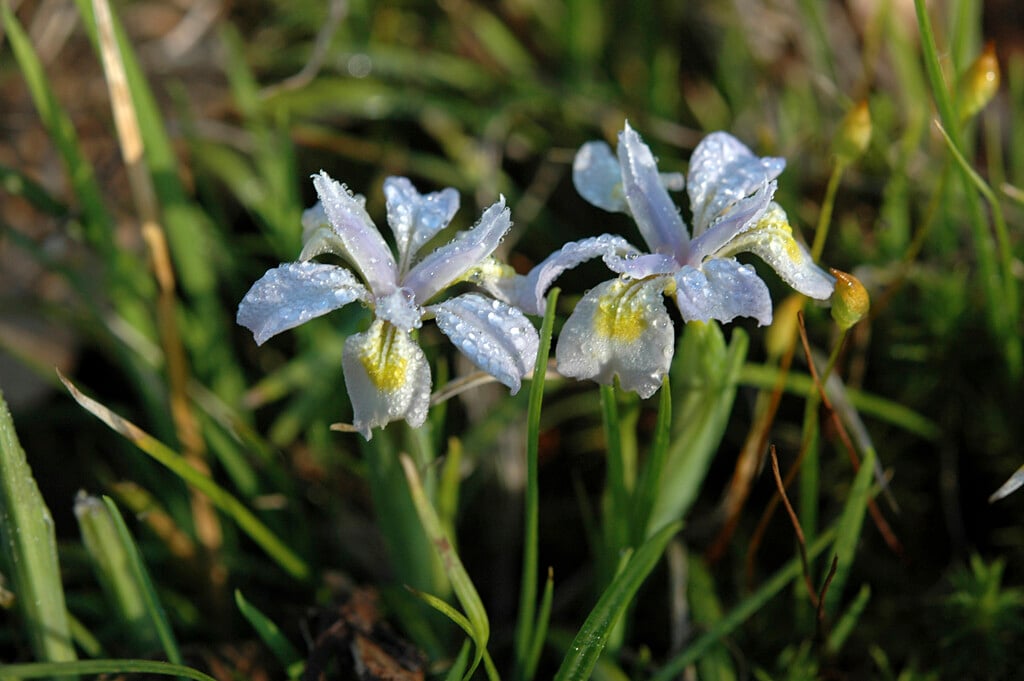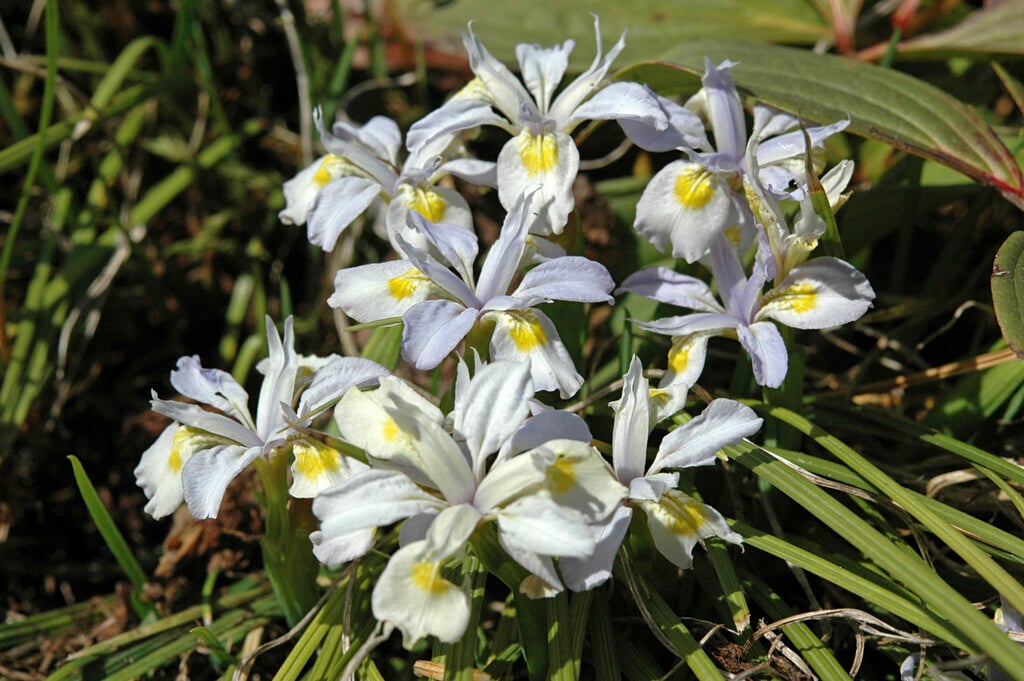Iris goniocarpa
A clump-forming perennial, to around 30cm high, with linear, grass-like green leaves. Small, mottled violet-blue or occasionally white flowers, with tall standards and small white beards tipped with yellow on the falls, are borne singly on upright stems in late spring and early summer
Size
Ultimate height
0.1–0.5 metresTime to ultimate height
2–5 yearsUltimate spread
0.1–0.5 metresGrowing conditions
Moisture
Moist but well–drainedpH
Neutral, AcidColour & scent
| Stem | Flower | Foliage | Fruit | |
| Spring | Blue Purple White | Green | ||
|---|---|---|---|---|
| Summer | Blue Purple White | Green | ||
| Autumn | Green | |||
| Winter |
Position
- Full sun
Aspect
South–facing
Exposure
Sheltered Hardiness
H6Botanical details
- Family
- Iridaceae
- Native to GB / Ireland
- No
- Foliage
- Deciduous
- Habit
- Clump forming
- Potentially harmful
- Harmful if eaten. Wear gloves and other protective equipment when handling. Pets: Harmful if eaten. For further information and contact numbers regarding pets, see the HTA guide to potentially harmful plants
- Genus
Iris may be rhizomatous or bulbous perennials, with narrow leaves and erect stems bearing flowers with 3 large spreading or pendent fall petals, alternating with 3 erect, often smaller, standard petals, in late winter, spring or early summer
- Name status
Correct
- Plant range
- Himalaya to C China
How to grow
Cultivation
Thrives in a sunny position, in moist but well-drained, ideally neutral to slightly acid soil
Propagation
Propagate by division, see dividing irises for more detailed advice
Suggested planting locations and garden types
- City and courtyard gardens
- Cottage and informal garden
- Patio and container plants
- Rock garden
- Flower borders and beds
- Wall side borders
Pruning
Remove spent flower stems after flowering, and any dying foliage in autumn
Pests
Diseases
May be susceptible to aphid-borne viruses, bacterial soft rot and grey moulds; see Iris diseases
Love gardening
Sign up to receive regular gardening tips, inspiration, offers and more
View our Privacy Policy
Get involved
The Royal Horticultural Society is the UK’s leading gardening charity. We aim to enrich everyone’s life through plants, and make the UK a greener and more beautiful place.

